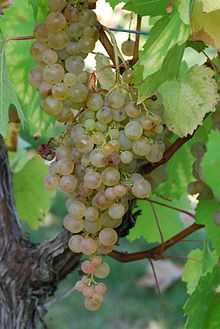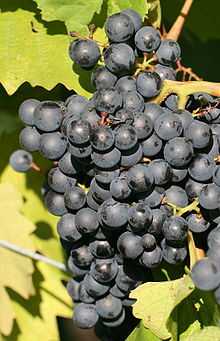Frankish and Hunnic grape varieties

A division of grape varieties into Frankish and Hunnic grape varieties was practiced in German-speaking countries in the Middle ages and separated varieties considered to be better from those considered to be lesser. Frankish (fränkisch) grapes were considered noble grapes, and the designation derived from the Franks, as popular belief held that those were grapes introduced by Charlemagne or at least through his edicts.[1] Hunnic (hunnisch or heunisch) grapes, on the other hand, were the simpler varieties.[2]
It is unclear whether it was actually believed that these varieties had been introduced by the Huns, or if the term Hunnic was just used as a pejorative. Another possibility is that heunisch derives from an old Low German word for "large", and that has been applied to grape varieties with large berries, which give higher yields than the smaller-berried Frankish wines, but wines of lower quality and less concentrated flavours.[2]
History

These terms can be traced back to the early Middle Ages. As an example, the mystic Hildegard of Bingen wrote in the 12th century that the Frankish wine was stronger and set the blood so much in motion that it was necessary to dilute it with water, while the Hunnic wine was more watery by nature and therefore had not to be diluted.[2] Some of the earliest specific varieties to be mentioned as Frankisch were Traminer, Pinot gris and Riesling in the 14th to 15th century.[1] It could be noted that more than 500 years of not very well-documented viticultural history and highly uncertain grape identification separate Charlemagne and these written claims. Other traditional Frankish varieties are Elbling, Orléans, Pinot noir and Silvaner.
The terms live on in the present names or synonyms of many varieties, such as Blaufränkisch (blue Frankish)[3] and Weisser Heunisch (white Hunnic), the German name of Gouais blanc.
Relationship to other grapes
DNA profiling from the 1990s has revealed that many classical grape varieties are crosses with parents in both the Frankish and Hunnic groups.[2] Two examples are Chardonnay, which is a cross between Pinot (noir) and Gouais blanc, and Riesling, which is a cross between Gouais blanc and another cross with a Traminer component. Thus, the Frankish group of varieties does not have a totally separate pedigree from the Hunnic group. This has led to a resurged interest in the Hunnic grapes, many of which lead a dwindling existence and are on the brink of becoming extinct.
See also
- Noble grapes
- International variety
References
- ↑ 1.0 1.1 Wein-Plus Glossar: Fränkisch, accessed on January 23, 2013
- ↑ 2.0 2.1 2.2 2.3 Wein-Plus Glossar: Heunisch, accessed on January 23, 2013
- ↑ Jancis Robinson, ed. (2006). "Blaufränkisch". Oxford Companion to Wine (Third Edition ed.). Oxford: Oxford University Press. p. 82. ISBN 0-19-860990-6.